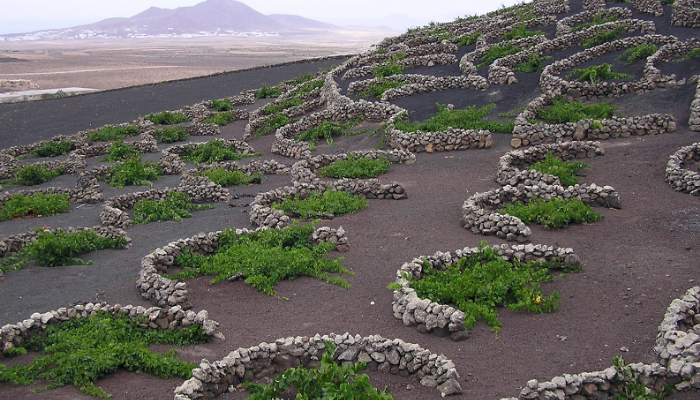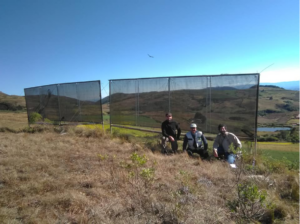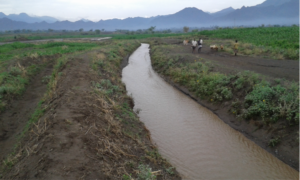
As an environmental engineer trained in water resources management, I have always been fascinated by the multiple uses of water, and specifically the use of water for food production. I always assumed that “the largest share of freshwater resources was used for food production”, thus I logically pursued my MSc. thesis and then my Ph.D. in agricultural sciences.
How Fieldwork Shifted My Perspective
During my MSc. fieldwork in Ethiopia, this assumption was challenged. I was working on Spate Irrigation, which despite the word “irrigation,” is actually a form of water harvesting. The concept of water harvesting transformed the way I understood water management for agriculture. Water harvesting can be defined as the “collection of precipitation through runoff and its storage for productive use” or, more generally as “the collective term for a wide variety of low-cost interventions which are primarily or secondarily intended to collect natural water resources which otherwise would have escaped from human reach, and buffer them through storage and/or recharge on or below the soil surface.” While the first definition is limited to the management and the storage of runoff, the second expands to include “non-conventional” water sources such as the collection of fog.

Fog collection nets in the Valles Crucenos area, Bolivia
The Blue-Water Bias
Both the definitions were, to some extent, revolutionary for me. They shifted my focus from the use of the so-called “blue water” (groundwater, persistent surface water such as lakes and rivers) for agriculture to the potential of other parts of the hydrological cycle, including quick runoff, floodwater in ephemeral dry rivers (such as for the case of Spate Irrigation), fog and dew. Collecting these resources does not impact blue water sources, and has a limited impact on the flows of “natural water resources which otherwise would have escaped from human reach” (definition by Ouessar et al. (2012) and (UNEP, 2009). At the same time, it enables retention of water in storage systems or in the soil as “green water” ready to be used for food production, reforestation or landscape restoration.

A canal collecting floodwater in a Spate Irrigation System in Tigray Region, Ethiopia
Although for me, the potential for this green water capture is obviously revolutionary, its importance has not yet been translated into investment strategies or development policy. Why not? This blue-water bias emerged from the wave of modernization of water infrastructure starting in the 1950s that framed water management as an engineering challenge. The blue-water bias, in turn, contributed to normalizing a vision whereby the only water sources worthy of attention were permanent water bodies. Ephemeral and intermittent flows in arid areas, including those at the heart of water harvesting, were almost completely ignored. This bias has even been considered a dimension of water colonization.
Over the last 15 years, scholars like Johan Rockstrom and Malin Falkenmark have revived the interest for water harvesting and laid the basis of a more sustainable green-blue water management for a new generation of scholars including myself. It is now clear that researching and revitalizing water harvesting can lead to more sustainable water management.
Future research is needed to investigate, for instance, the consequences of an accelerating hydrological cycle, with more intense and less frequent rainfall events, for water harvesting: would structures be washed away? Or lose efficienciency because of lack of use? As demands for water increase, socio-hydrological approaches and hydro-social theories will also be relevant: i.e., water harvesting intensification could accentuate upstream-downstream conflicts, especially under the stress of climate change-led shifts in rainfall patterns.
For these reasons, water harvesting alone cannot be considered a panacea. Even if it can represent a truly sustainable option for water resource management, we cannot underestimate the impact that climate change and anthropic pressures will have.
Edited by B. Schaefli

zulma gareca portillo
Por la imagen y el paisaje que genera esta tecnologia me parece muy interesante para el aprovechamiento optimo en la agricultura . Aqui en Bolivia, hay poracticas de cosechas de aguas de lluvia especialmente en zonas altas a a través de fosas “qotañas ” (quechua) comunitarias orientado al riego de hortalizas y otros cultivos.